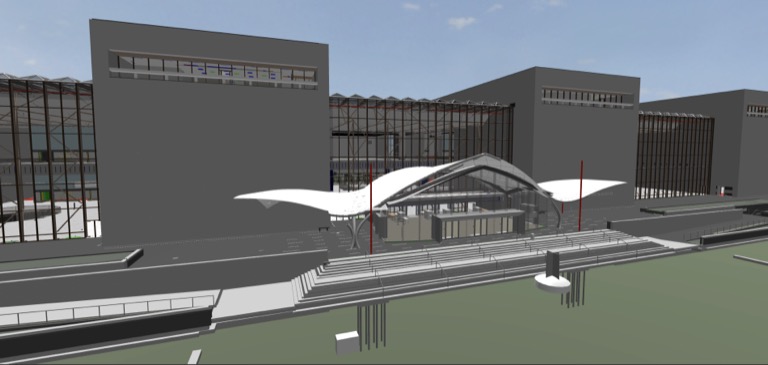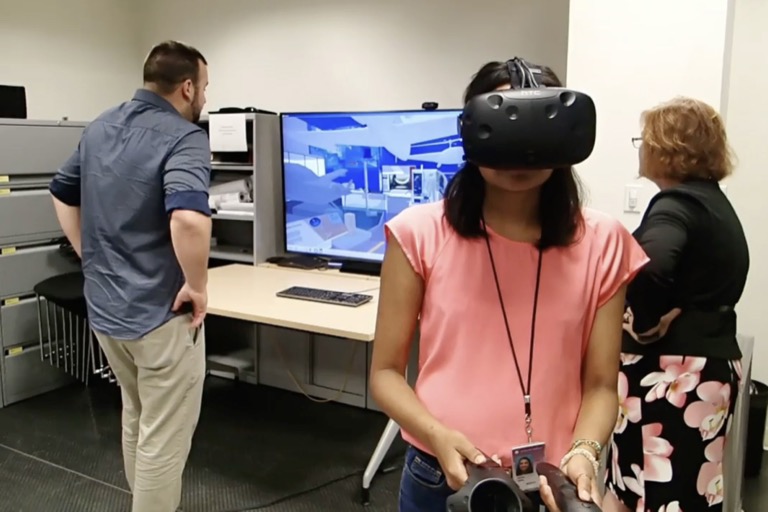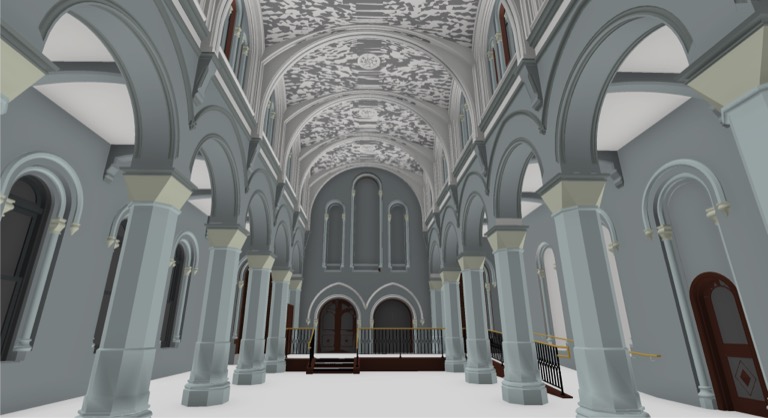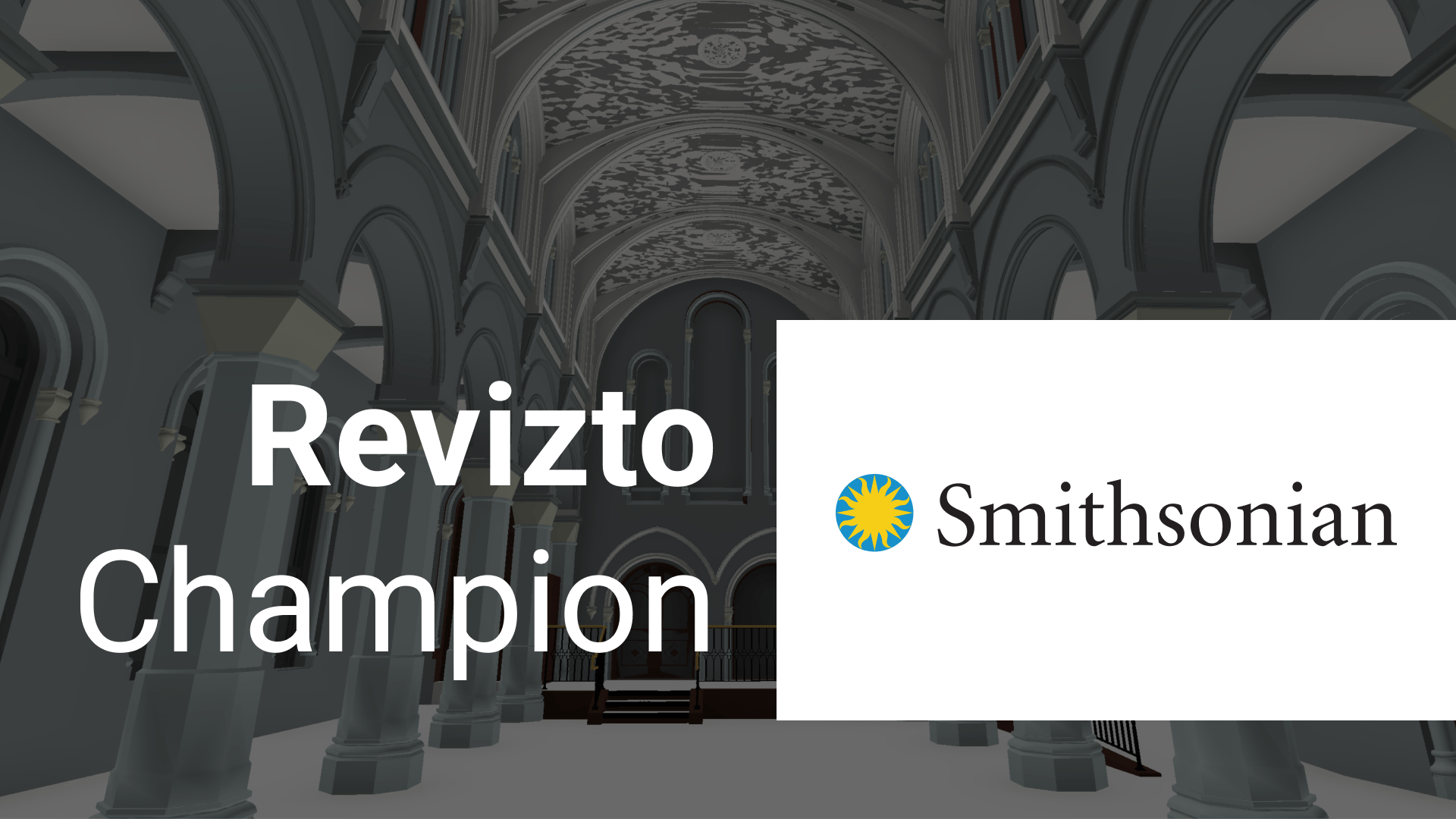An Owner’s Take: Breaking Down the Benefits of Revizto
The Smithsonian Institution is the world’s largest museum, education, and research complex, with 21 museums and the National Zoo — shaping the future by preserving heritage, discovering new knowledge, and sharing our resources with the world.

- Location
Washington, D.C.
- Industry
Cultural Centers
- Download as PDF
- Share this:
How Revizto and VR Can Help Amplify Efficiency, Identify Issues Early On, Avoid Change Orders, and Fuel Fundraising
Michael Carrancho has over 30 years of design and construction experience in the U.S. and internationally. As a Deputy Director in the Office of Planning Design and Construction his focus is on Engineering & Design. Michael is responsible for the design management of all the Smithsonian’s capital and large maintenance projects, and for publishing SI Facility Design Standards. He is also the senior building code official and final signatory on all construction documents for the institution.
Michael has been at the forefront of the Smithsonian’s technological integration since 2013. Wearing the emblem of the institution's BIM champion, Michael led the charge in pioneering the BIM initiative in the organization, harnessing Revizto, alongside other hardware and technology, to redefine construction and visitor experiences.
In this case study, Michael breaks down different use cases and benefits he has gained, showcasing the value and impact that Revizto’s Integrated Collaboration Platform can have for Owners.
Creating Immersive Design Reviews
The BIM initiative at the Smithsonian started in 2013. Given that they didn’t have experience with BIM, they sought the expertise of consultants to navigate this terrain and, with their guidance, determined nine distinct use cases for BIM. One of the pivotal use cases was creating an immersive design review through virtual reality. Revizto was suggested by their consultant. Michael pointed out that Revizto was superior due to its ability to facilitate users to interact within a 3D space, not just rotate it. On the VR hardware front, after thorough consideration, the HTC Vive was chosen.
Michael highlighted the portability and versatility of their immersive setup, primarily utilizing Revizto with the HTC Vive. They operated this immersive experience through a laptop, which, although cumbersome (referred to as a "boat anchor laptop"), effectively ran Revizto. This allowed them to transform any 16 by 16-foot area into a virtual reality "cave" for immersive design review. This setup was taken to various locations, including Panama and American history sites.
Being able to immerse people with this portable type of software and hardware allows you to avoid travel costs. We were able to immerse Panamanian researchers in spaces we had designed for natural history. Instead of bringing ten scientists from Panama to the United States to visit the actual space, we brought the space to them and had them walk through it.
Getting More Valuable Feedback During Design Review
During the interview, Michael shared how the immersive design process has also brought in more valuable feedback from non-technical individuals - like he was able to get during the design review of the museum’s medical exam rooms. These are spaces dedicated to assisting museum visitors who might experience health issues during their visit. The primary users of these rooms, nurses, lacked experience with design drawings and construction. Despite showing them various representations, including drawings, models, and more on an 85-inch screen, feedback was minimal. This lack of input was concerning. In response, they immersed these professionals in a virtual space using Revizto and VR in a dedicated 16 by 16-foot area, hoping for more valuable feedback.

Michael continued his story, emphasizing the significant value of immersive design for non-technical professionals. When these medical personnel, including nurses, entered the virtual space, they were asked to simulate an examination process. The immersive experience allowed them to identify immediate issues, such as the unsuitability of the table's positioning against the wall. They needed access to three sides of the table for effective examinations. They also noted other equipment like blood pressure and vitals monitors on carts, which hadn't been considered. This hands-on, role-playing experience in the virtual environment yielded immediate, actionable feedback that helped revise the design.
These insights were invaluable in preventing future changes, a form of "change order avoidance." Without this immersive experience facilitated by Revizto and VR, these essential modifications would likely have only been flagged post-construction, resulting in costly and time-consuming changes.

Using Technology to Fuel Fundraising
When it comes to fundraising, Michael has also found that bringing technology in to provide context offers a persuasive edge. By enabling donors to virtually experience spaces and exhibits before construction, they can visualize their contributions' impact more tangibly than with 2D drawings. Walking around virtually, seeing their names, or visualizing their contributions has immense potential to inspire and encourage further donations.
Looking at the Post-Construction Potential
Michael delved into the post-construction potential of Revizto, highlighting its applicability in enhancing visitor experiences and fundraising efforts. Such a tool could guide visitors, helping them plan their museum route, and offering a more immersive preview of the facility. Although not yet actualized, the idea holds potential.
We've looked at Revizto as potentially being something that could be leveraged after construction to provide a virtual visit to the building. It has the capability to be able to provide that information and also for potentially route tracking. To understand how you can maneuver and kind of plan your visit to the museum.

Final Insights on Flexibility, Collaboration, and Transparency
As an Owner, Michael has experienced the value in a tool like Revizto. He concluded the conversation by sharing final insights, software applications, and benefits that the platform has provided him and his team.


